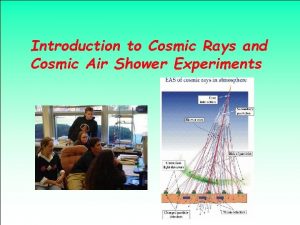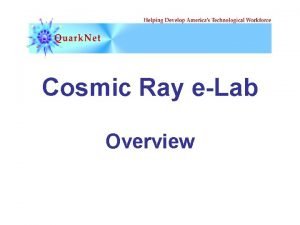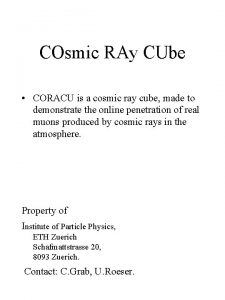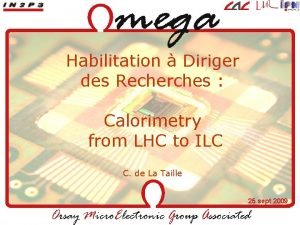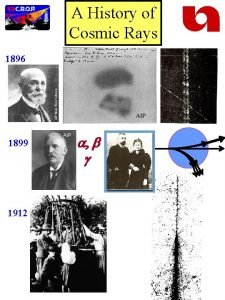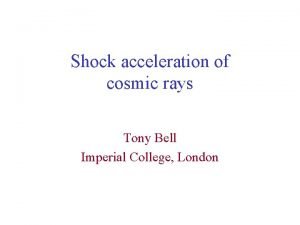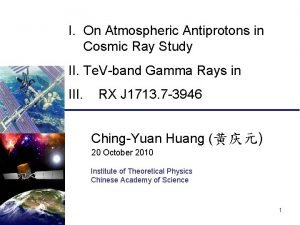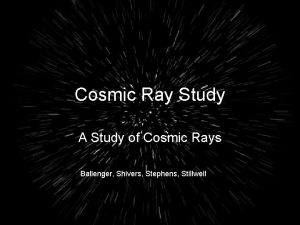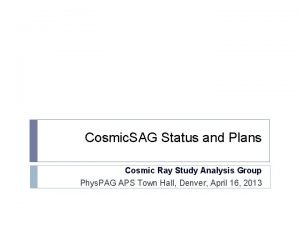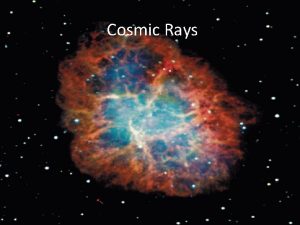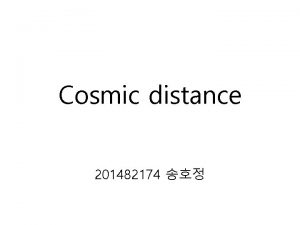Cosmic Ray Lifetime Study A measurement of Special






- Slides: 6

Cosmic Ray Lifetime Study A measurement of Special Relativity Richard Lasky – Summer 2010

The Theory • Muons are formed from collisions of cosmic rays with the atmosphere. • Because they are unstable, they should decay as they travel to our detectors. • However, relativistic effects extend their lifetime, allowing us to measure the rest lifetime of a muon in a slab of our detector. Assume for the moment that a muon has a 2 microsecond lifetime. If it travels close to the speed of light, classically it should move only 600 meters before it decays. • Conclusion: The muons we detect from the edge of space must travel so close to the speed of light that their lifetimes are greatly extended. • In fact, we make the assumption that they are “still new” when we finally stop them with our detector so that we can measure their full “rest lifetime. ” To reach the surface, a muon must “live” about 0. 3 ms or

So, if we can stop a muon, we can measure essentially its rest lifetime in the material. As shown in this Feynman diagram, a muon decays into a muon neutrino and – by a Wboson mediating a weak The net reaction is: interaction -- into an electron and an antielectron neutrino Both the muon and the electron can interact with the scintillation material to give off a light pulse we can use to trigger a timer to determine the lifetime of the muon.

Graph Resulting from Lifetime Study

Decay of the Muons in the detectors related to Radioactive Decay Law λ = decay constant http: //www. youtube. com/watch? v=515 Blc. Ho mw 8&feature=related

Setup for experiment • Detectors should be in stacked array • Set d = 2 and w = 401 – W = gate window – d = TMC delay
